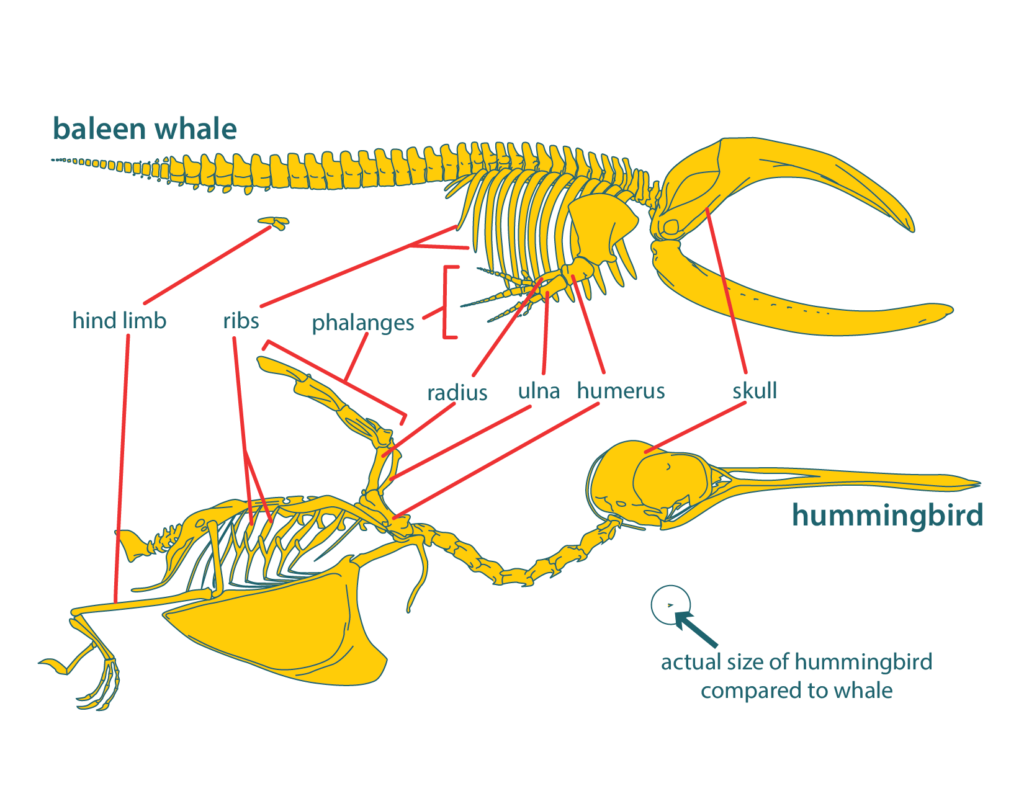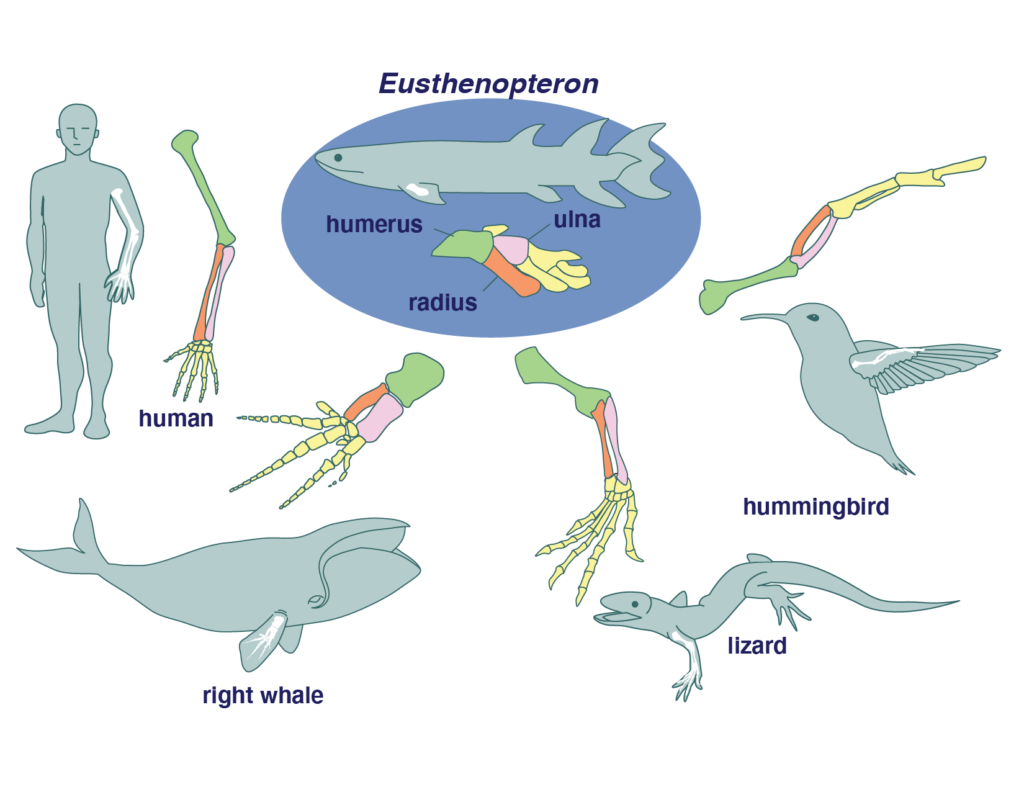Organisms that are closely related to one another share many anatomical similarities. Sometimes the similarities are conspicuous, as between crocodiles and alligators. In other cases – particularly when lineages have experienced natural selection shaping them in different ways – more study is needed for a full appreciation of relationships, as in the case of the leaves of different plants described earlier (e.g., poinsettia’s “petals” and cactus spines).
Modification of the tetrapod skeleton
Whales and hummingbirds look very different from one another on the surface. Nonetheless, their relationship is easy to demonstrate: they are both tetrapods (vertebrates that either have legs, or had ancestors with legs, such as snakes), and they both have tetrapod skeletons inherited from a common tetrapod ancestor. Apart from the few bones that have been lost over time, nearly every bone in one corresponds to an equivalent (homologous) bone in the other; however, the sizes and shapes of these bones have been greatly modified over millions of years, as the processes of variation and natural selection adapted them to their different lifestyles.
Tetrapod forelimb
Zooming in on the tetrapod forelimb highlights another classic example of homology.

Hummingbirds, whales, frogs, and rabbits all have differently shaped forelimbs, reflecting their different lifestyles. But those different forelimbs all share the same set of bones – starting from the shoulder, one bone (the humerus), followed by two bones (the radius, and the ulna). These same arm bones are seen in modern tetrapods (like us humans!) and in fossils all the way back to the extinct fish Eusthenopteron. This sort of evidence helps demonstrate the common ancestry of all tetrapods.
Read more about recognizing homologies.
Reviewed and updated, June 2020.
